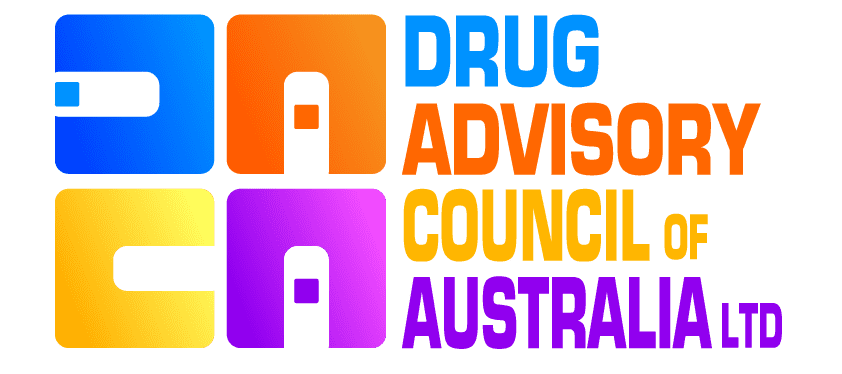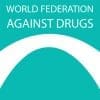| Open Letter on Pill Testing from Drug Free Australia to; |
|
Royal Australasian College of Physicians |
| Royal Australian College of General Practitioners |
| Australasian College for Emergency Medicine |
| Rural Doctors Association of Australia |
| Australian Medical Association |
| Australian Nursing Midwifery Association |
| National Australian Pharmacy Students’ Association |
| Pharmaceutical Society of Australia |
| Forensic and Clinical Toxicology Association |
| Public Health Association of Australia |
Dear Board Chair/President,
I am writing as the Secretary for Drug Free Australia.
Drug Free Australia notes that your organisation has put its name behind Harm Reduction Australia’s and its auspiced entity Pill Testing Australia’s campaign for pill testing at festivals and clubs.
We are writing to your Board or management committee because we have spent considerable time examining the existing science behind party pill deaths in Australia and believe there is nothing in the science that lends support to pill testing. To that end we wish to ask questions of your Board or Management Committee regarding your support for pill testing.
- According to a recent study of 392 MDMA-related deaths in Australia between 2001 and 2016 ecstasy was a direct/antecedent cause or a significant contributing condition in all 392 deaths. We note the study did not nominate any deaths from impurities or contaminants, nor were any synthetic drugs which can be cut with MDMA such as PMA or NBOMe listed as causal.* Yet Pill Testing Australia, which your organisation explicitly supports, red-flags substances like N-ethylpentylone (which has caused zero deaths in Australia) with a red card which denotes “the presence of a substance known to be associated with increased harm / multiple overdoses / death” and yet irresponsibly gives a white-card “all clear” to the substance that has been causal in 392 deaths in 16 years.
Q. Will your organisation continue to give explicit support to this pill testing practice of giving a white card to ecstasy when it is the only psychoactive substance found? If so, why?
- Pill testing Australia claims that in light of the dangers of ecstasy, which they acknowledge but still refuse to red-flag, their trained counselors and medical staff will highlight the dangers of ecstasy use, and attempt to talk the user out of ingesting the substance. Yet at the April 2019 Canberra pill testing trial not one ecstasy user was recorded as having discarded their pill before leaving.
Q. Does your organisation, in light of the 392 deaths in 16 years in Australia, consider pill testing’s failure to keep ecstasy out of the mouths of users after the horse has bolted via their investment in these pills, to be a successful harm reduction intervention?
- The police successfully deter a large potential percentage of party drugs from being ingested at music festivals just as mobile police radar vehicles deter a lot of speeding. Compared to pill testing, police are far clearly more successful at keeping many users from bringing illicit drugs to a festival and then ingesting them. This is a proven method for keeping pills out of users’ mouths.
Q. Does your organisation disagree that policing is a more effective harm prevention than pill testing’s attempts at deterrence once a user’s pill has been analysed? If not, why not?
- Pill Testing Australia is now looking to government to fund the considerably more expensive DART-MS technology which can detect purity and dose of substances in a pill, which their existing FTIR equipment cannot. They believe that they can thereby better counsel their patrons on how to avoid overdoses.
Q.1 Does your organisation differ with the most prominent harm reduction organisation in the world that ecstasy overdose is rare? If so, why?
Q.2 Given the graph below of the dose and subsequent peak MDMA blood concentrations of 49 ecstasy users studied in South Australia, (with the blue shaded rectangle denoting the blood concentrations of the lower 50% of Australia’s 392 MDMA-related deaths), do you agree that pill testing medical staff or counselors could reliably give better and more widespread information on individual safer dosing than can animated signage on main stage screens at festivals?
Drug Free Australia has shared the contents of this letter with more than 900 State, Territory and Federal Parliamentarians across Australia and we believe that they will be keen to hear your organisation’s answers to these questions. We believe it would not be unreasonable for Australians to think that if nothing is heard within a three month period that your organisation has been unable to answer these questions.
If you wish to raise any issues with Drug Free Australia concerning this letter, please e-mail me at gxian@tpg.com.au or ring on 0422 163 141.
Yours faithfully
Gary Christians
SECRETARY
Drug Free Australia
*We note that there were only two possible deaths from ecstasy cut with another drug during this period, one in 2007 involving PMA and another on the Gold Coast in 2016 involving NBOMe. It appears media were guessing at the drugs causing death in both cases.




